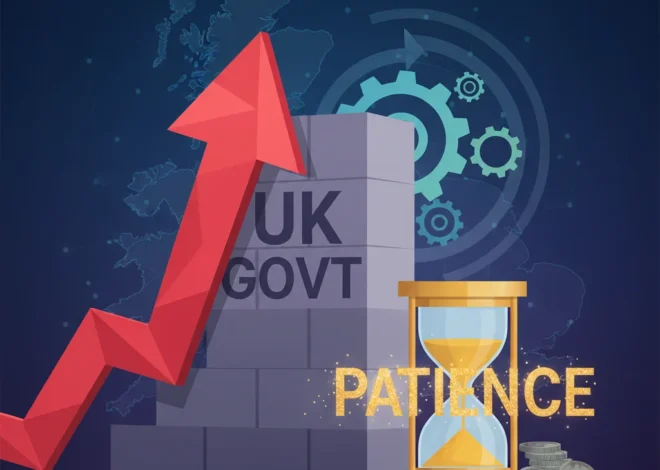
A Tax on Prudence? Unpacking the Rumored Cuts to the UK’s Cash ISA Allowance
The Cornerstone of UK Savings Under Threat
For over two decades, the Individual Savings Account (ISA) has been a cornerstone of personal finance in the United Kingdom. It represents a simple, powerful contract between the state and the saver: put money aside, and the returns you earn are yours, free from the grasp of the taxman. However, recent whispers from Westminster suggest this long-standing pact may be under review. Reports have emerged that the Chancellor, Rachel Reeves, is considering a revival of plans to cut the tax-free allowance for Cash ISAs, a move that has sparked immediate concern among MPs and financial experts alike (source).
This potential policy shift raises critical questions about the future of the UK’s savings culture, the stability of our national economy, and the government’s priorities in a challenging economic climate. Is this a necessary measure for fiscal prudence, or a misguided policy that penalizes responsible savers? In this comprehensive analysis, we will delve into the history and function of ISAs, explore the arguments for and against the proposed cuts, and examine the wider implications for investors, the banking sector, and the evolving world of financial technology.
Understanding the ISA: A Pillar of Personal Finance
Introduced in 1999, ISAs were designed to encourage saving and investing by offering a tax-efficient wrapper for assets. The premise is straightforward: you can save or invest up to a certain amount each tax year without paying income tax, tax on dividends, or capital gains tax on any returns. The current annual ISA allowance is a generous £20,000 per adult, which can be allocated across different types of ISAs to suit various financial goals and risk appetites.
To understand the potential impact of a change, it’s crucial to distinguish between the main types of ISAs available. Each serves a unique purpose in the landscape of personal finance and investing.
| ISA Type | Primary Purpose | Key Features | Risk Level |
|---|---|---|---|
| Cash ISA | Risk-free, tax-free saving | Similar to a standard savings account but with tax-free interest. Easy access or fixed-term options available. | Very Low |
| Stocks & Shares ISA | Long-term, tax-free investing | Allows investment in funds, stocks, bonds, and other assets. Potential for higher growth, but capital is at risk. | Medium to High |
| Lifetime ISA (LISA) | Saving for a first home or retirement | Receives a 25% government bonus on contributions up to £4,000 per year. For adults aged 18-39. | Varies (Cash or Stocks & Shares) |
| Innovative Finance ISA (IFISA) | Peer-to-peer lending | Invest in peer-to-peer loans for potentially higher, tax-free returns. Carries higher risk than cash. | High |
The focus of the current debate is the Cash ISA, the simplest and most popular vehicle, often used for emergency funds, short-term goals, and by risk-averse savers. According to the latest HMRC statistics, around 11.2 million adults subscribed to an ISA in the 2021-22 tax year, with Cash ISAs being a significant component of this total.
The Ultimate Risk Analyst: What Investors Can Learn from War Photographer Lynsey Addario
The Proposal: Why Cut the Cash ISA Allowance?
The central argument for reducing the Cash ISA limit revolves around fiscal policy and simplification. Proponents might suggest that the current £20,000 allowance is overly generous for cash savings, especially when considered alongside the Personal Savings Allowance (PSA). The PSA, introduced in 2016, already allows basic-rate taxpayers to earn up to £1,000 in savings interest tax-free per year (£500 for higher-rate taxpayers). The thinking goes that the PSA covers the vast majority of savers, making a high Cash ISA limit redundant and an unnecessary drain on tax revenue.
From a purely economic standpoint, a government looking to balance the books might see this as a relatively low-impact way to increase its tax take. Furthermore, some policymakers might argue that a lower Cash ISA limit could subtly encourage a shift in the nation’s financial behaviour, nudging savers towards the stock market via Stocks & Shares ISAs, which in turn fuels business investment and economic growth.
The Counter-Argument: Defending the UK’s Savings Culture
The backlash from MPs and financial advocates against the proposed cut is rooted in several powerful arguments that champion the cause of the everyday saver.
1. Penalizing Prudence in a Cost-of-Living Crisis
At a time when households are grappling with inflation and economic uncertainty, encouraging a savings habit is more critical than ever. Reducing the tax-free limit on the safest form of saving sends a contradictory and potentially damaging message. It risks being perceived as a “tax on prudence,” penalizing those who have diligently built up a financial safety net.
2. The Diminishing Power of the Personal Savings Allowance (PSA)
While the PSA offers protection, its value has been significantly eroded by rising interest rates. A few years ago, when interest rates were near zero, a saver would have needed a vast sum to generate £1,000 in interest. Today, with savings rates approaching 5%, a basic-rate taxpayer breaches their PSA with just over £20,000 in savings. For higher-rate taxpayers, the threshold is just £10,000. A recent analysis suggests that millions more people are set to pay tax on their savings interest as a direct result of this shift, making the tax-free protection of a Cash ISA more vital, not less.
3. The Unmatched Simplicity and Security of ISAs
The beauty of the ISA system is its simplicity. The money inside is tax-free, period. It doesn’t matter what the interest rate is or what tax bracket you fall into. This clarity is a powerful motivator for saving. Complicating the landscape by forcing more reliance on the tiered PSA system undermines this core benefit and could deter people from saving altogether.
A Green Giant Stumbles: Why Vestas' Polish Pause Signals a Storm for European Wind Energy
Broader Implications for Investing and the Economy
Any change to the ISA framework will have ripple effects across the financial ecosystem, impacting everything from the stock market to the stability of the banking sector.
A reduction in the Cash ISA limit could, in theory, push some capital towards Stocks & Shares ISAs. This may be seen as a positive for the economy, as it directs funds towards corporate investment. However, this assumes that savers are willing and able to take on market risk. For many, particularly those approaching retirement or saving for a short-term goal like a house deposit, the volatility of the stock market is inappropriate. Forcing this choice could lead to poor financial outcomes for individuals and does little to foster a broad-based, resilient savings culture.
Furthermore, a strong base of retail cash deposits held in banks and building societies is a crucial component of financial stability. These funds provide liquidity for lending to businesses and homeowners. Discouraging this form of saving could have unintended consequences for the broader banking system and credit availability.
What This Means for Your Financial Strategy
While this policy remains speculative, the discussion itself provides a valuable opportunity to review your own savings and investment strategy.
- Maximize Your Current Allowance: The £20,000 ISA allowance for the current tax year is still in place. If you have funds to set aside, utilizing your ISA is one of the most effective tax-shielding strategies available.
- Understand Your Tax Position: Calculate how much interest your non-ISA savings are generating. Are you close to breaching your Personal Savings Allowance? If so, moving those funds into a Cash ISA should be a priority.
- Review Your Risk Profile: Does your allocation between cash and investments still align with your financial goals and timeline? The debate may prompt you to consider whether a portion of your long-term savings could be working harder in a Stocks & Shares ISA, while ensuring your emergency fund remains secure in cash.
The Million-Dollar Mistake: Why Deferring Your Pension Is a Bet Against Your Future Self
Conclusion: A Crossroads for UK Savings Policy
The reported plan to cut the Cash ISA allowance places the UK’s financial policy at a crossroads. On one path lies a strategy that prioritizes short-term tax revenue and may subtly push savers towards the riskier, but potentially more economically stimulating, world of stock market investing. On the other path is the continuation of a decades-long policy that champions a broad, inclusive, and simple culture of saving, providing a secure foundation for millions of households.
As the economic landscape continues to be shaped by global pressures and evolving financial technology, the need for clear, stable, and encouraging savings policies has never been greater. The humble Cash ISA may seem like a simple tool, but it represents a powerful commitment to the financial well-being of the nation. Whether that commitment will be upheld remains a critical question for the government to answer.


